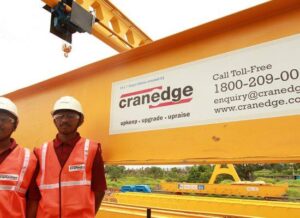The Economic Argument – How Effective Facilities Management Helps You Save Costs.

It’s unfortunately, true that when it comes to India, even some of the most forward-thinking organizations may be lacking in strategic Facilities Management. Let me use this forum to try to build the case for all such organizations to adopt comprehensive Facilities Management solution – starting with the economic benefit.
When you have a workforce that’s any larger than 500 people, maintaining the facilities that house all these employees is far from an easy task. It requires a lot of effort, planning, and foresight. That is probably why you have a dedicated team to manage your facilities effectively but are you truly getting the most out of their efforts? That’s where Facility Management solutions come into the picture. These solutions can help your property and facility managers to become more effective and efficient. They can increase efficacies, streamline communications, scheduling, and project management, and overall perform better.
Facilities Management solutions are designed to perform various functions such as asset management and keeping a track of equipment information, managing maintenance costs, and saving space and resources. Some solutions that come together under the Facilities Management umbrella to help Facilities Managers are business analytics, extensive reporting, and workflow management to name a few. These solutions often integrate with other IT-driven systems such as building technology, ERP software, GIS solution, and CAD software for a more comprehensive outlook. The point has been made repeatedly how FMS can help you become more effective at managing your facility but here are 5 ways in which facilities management can help with cutting down your costs:
1. Preventive Maintenance
Well-designed FMS solutions offer transparent visibility and in-depth analysis of all the operations of the facility. This means that issues can be identified sooner and problems can be addressed proactively. Addressing problems early in the cycle is faster and less effort-intensive. That, and the sooner problems are resolved, the less their likely impact and the damage caused by them. Such proactive and preventive maintenance thus goes a long way in saving money.
2. Efficiencies
With Facilities Management solutions come to a more tightly integrated operation, better visibility of the resources at hand, and more transparent tracking of ongoing initiatives. This helps to drive efficiencies, which in turn helps to save costs. The efficiencies come from reducing duplication of efforts and directing resources to where they are most likely to have the most impact. Tasks get completed faster and with minimal wastage of resources – all of which plays into cost efficiencies.
3. Reducing Wastage
Among the biggest cost centers of any facility’s operations is energy. The costs of lighting and heating or cooling form a considerable portion of the day to day running expense of a facility. Another significant cost is the consumable resources that are utilized in running a functional operation. The big-picture view available from Facilities Management solutions gives facilities managers the opportunity to manage their consumption better. The real-time view allows better management, and the historical data helps to identify areas of wastage that can be curtailed. This means less money for the utility company and more money in the bank!
4. Easier Compliance
In most facilities today, significant effort has to be expended in complying with all appropriate safety and workplace regulations. This calls for effort in performing the mandated tasks, providing the necessary working conditions and in reporting on the performance against the designated standards. This effort becomes magnified when you consider that in many cases multiple standards may apply – for example when corporate standards are tied to an international location but the local standards are different. An FMS can help to reduce this effort considerably – especially the effort expended in reporting. Of course, saved time and effort translate into money.
5. Training
Facilities need lots of hardworking people to run them and these people need regular training. Training takes time, costs money, and is often ineffective. Learning on the job is common, but this also costs money due to errors and mistakes. We could easily make the case that since FM solutions tend to be integrated, based on best practices, and easy to use – this will significantly reduce the training effort. Essentially people will learn what to do faster and can become productive faster.
I have written in the past about how I believe it’s time for India’s Facilities Managers to embrace technology if they want to start contributing to the strategic imperatives of their organizations. In our competitive times, if they are able to contribute to saving costs, that would be a good first step. It seems clear that leveraging the power of a good Facilities Management solution can help them make that contribution – the question is, are they listening?







